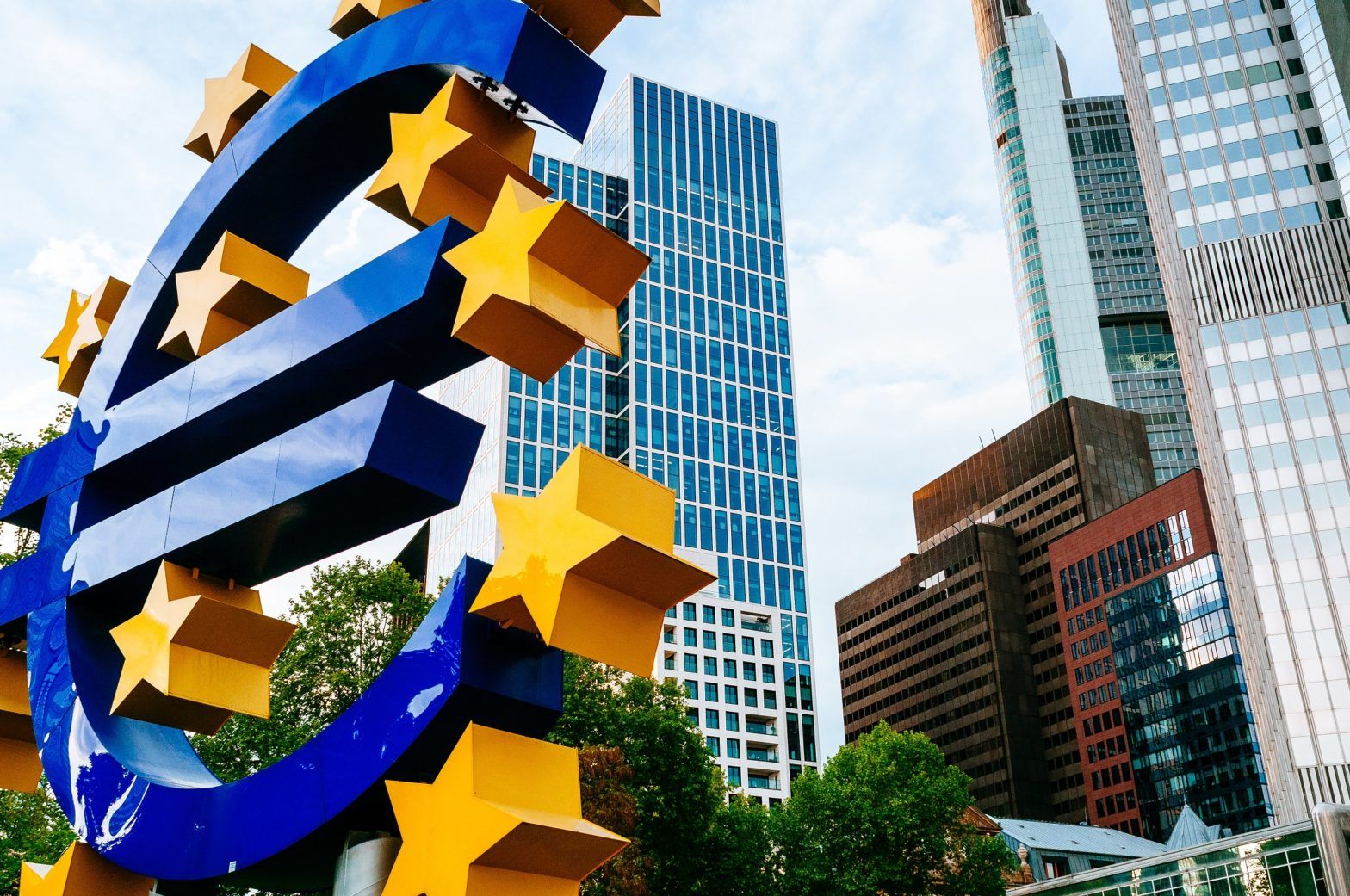The European Central Bank extended its pledge to keep interest rates at record lows until at least the middle of 2020 amid ongoing political uncertainty, trade war concerns and weakness in emerging markets.
In its quarterly meeting in Vilinus on Thursday, ECB policymakers left the benchmark rate at zero and the deposit rate at minus 0.4%.
The central bank expects marginally higher growth and inflation in 2019 than previous forecasts, but slightly reduced growth forecasts for next year because it expects Europe’s slowdown to be longer and deeper than had been anticipated.
The ECB expects inflation to average 1.3% and GDP growth of 1.2% this year – both up 0.1 percentage points from its March forecasts. However, it expects 1.4% growth in 2020 – down 0.2 percentage points from the previous forecast.
ECB President Mario Draghi said the risks to the eurozone economy remain “tilted to the downside”, amid concerns about global trade which has weighed on the eurozone’s industrial sector and squeezed exports.
“The prospect of a rate hike has been pushed further out, keeping European interest rates at current ultra-low levels at least until mid-2020. But this comes hardly as a surprise to anyone,” said Wolfgang Bauer, fixed income fund manager at M&G Investments.
Bauer added that the recent sharp drop in German Bund yields suggested that markets have not been concerned with rate hikes but, on the contrary, have been putting higher odds on a rate cut.
A limited toolbox
Silvia Dall’Angelo, a senior economist at Hermes Investment Management, said that despite a deteriorating inflation picture, the ECB has resisted market expectations of aggressive easing and delivered an underwhelming package of measures.
The pricing of the ECB’s third bank liquidity programme – the so-called TLTRO-III – which is due to start in September was not as generous as expected, Dall’Angelo said.
“The interest rate applied in each operation will be 0.1% (0.1pp above the refi rate) and it will get as low as -0.3% (0.1pp above the depo rate) if banks meet their lending targets.
“In addition, the latest strengthening of the forward guidance, now stating that interest rates will be unchanged at least through the first half of 2020 (as opposed to end-2019 last month) has negligible implications, given that financial markets were already expecting unchanged (or lower) rates for the next two years,” she said.
Bauer shared the view that details of the TLTRO-III programme fell slightly short of many market participants’ expectations amid speculation that the new TLTRO (Targeted Longer-Term Refinancing Operations) round might offer even more generous terms for European banks than the previous programme.
“ECB president Mario Draghi did not take out his proverbial big bazooka today, but a distinctly smaller calibre,” he said.
Dall’Angelo said the ECB’s underwhelming response to rising downside risks to an already shaky economic outlook has more to do with a lack of monetary policy tools, rather than complacency.
“For all the reassurances that its toolbox is plentiful, the ECB has little ammunition left to fight low inflation. With rates at the effective lower bound, traditional monetary policy space is constrained,” she said.
The ECB ended its quantitative easing programme – which purchased more than €2.6trn of government and corporate bonds over a three-and-a-half-year period – in December last year.
Draghi to depart soon
Adding to the uncertainty, ECB president Mario Draghi is set to step down at the end of his eight-year term towards the end of this year.
The eurozone comprises 19 integrated but independent economies with separate banking systems and Draghi’s time at the helm has been defined by his steadfast commitment to stabilising the euro following the financial crisis. Draghi’s successor will inherit a plan to gradually unwind those measures and rebuild the buffers amid a darkening global economic picture.
German Bundesbank president Jens Weidmann, Finnish central bank chief Erkki Liikanen and French central bank governor Francois Villeroy de Galhau are among the names in the frame to succeed him.







